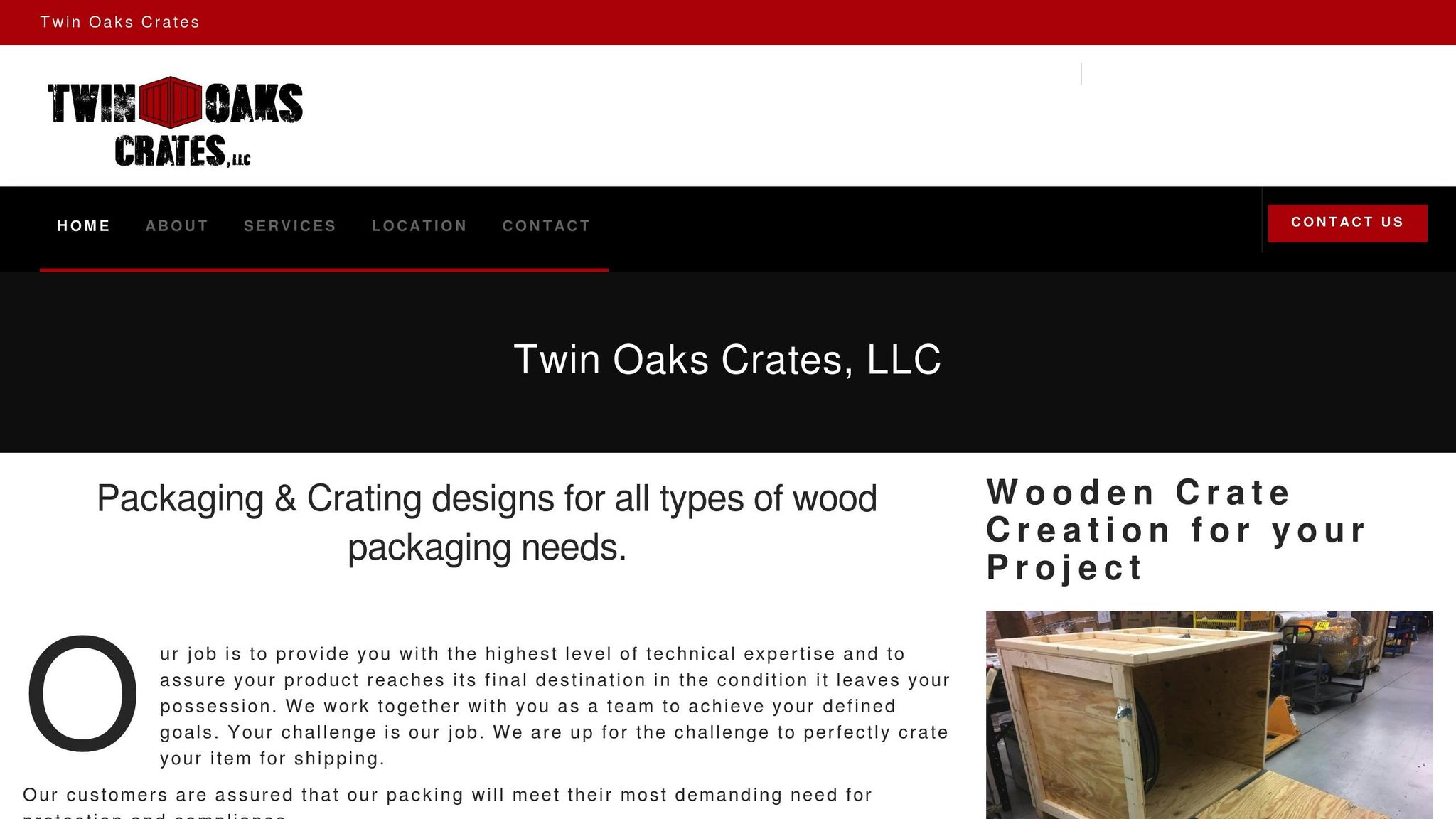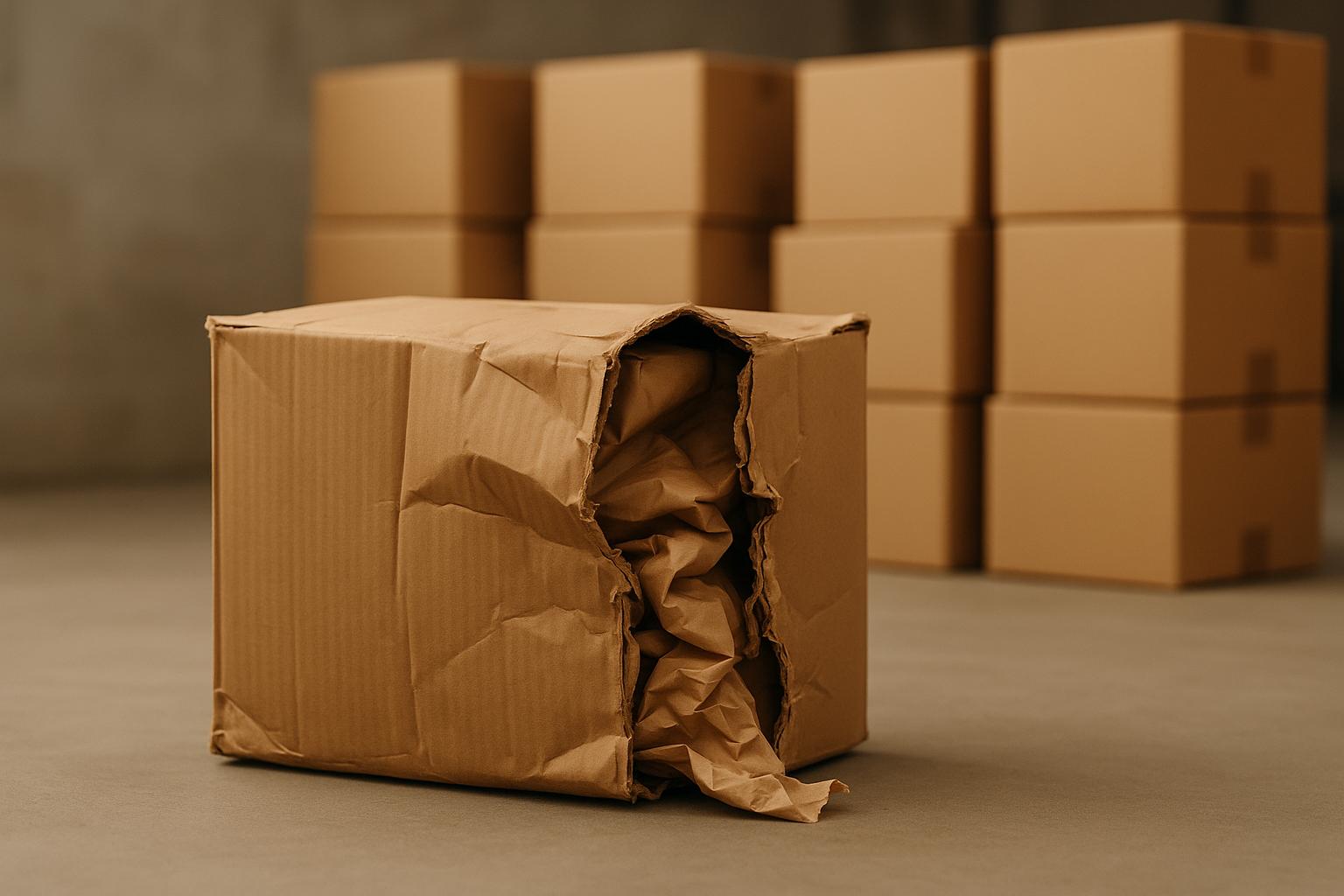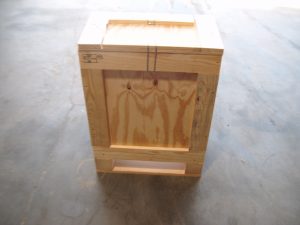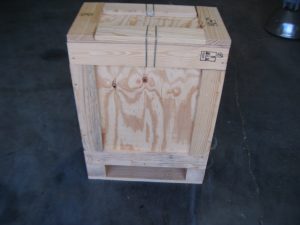When it comes to shipping, even minor packaging errors can cause significant damage to products, leading to financial losses, delays, and unhappy customers. Here are the five most common packaging mistakes to avoid:
- Wrong crate size: Oversized crates cause items to shift, while undersized ones risk crushing the contents.
- Poor internal padding: Insufficient cushioning leaves products vulnerable to impacts and vibrations.
- Ignoring weather and pests: Moisture, temperature changes, and pests can ruin shipments without proper protection.
- Bad labels and instructions: Missing or unclear labels lead to mishandling, improper stacking, and damaged goods.
- Too much or too little packing: Over-packing wastes resources, while under-packing fails to protect items.
How to Prepare Freight for Shipping to Avoid Damages
Mistake 1: Wrong Crate Size
Picking the wrong crate size is a packaging misstep that can lead to unnecessary expenses and potential damage to your products. Whether the crate is too big or too small, the results aren’t ideal.
Why Size Matters
Oversized crates might seem like a safe bet, but they come with their own set of issues. Extra space allows items to shift during transit, increasing the risk of damage. Plus, larger crates often mean higher shipping costs due to dimensional weight charges. On top of that, uneven weight distribution can make the crate unstable, causing it to tip, slide, or sustain impact damage during transport.
Undersized crates, on the other hand, can be just as problematic. They can crush the contents, put pressure on fragile items, and stress the seams to the point of breaking. Smaller crates also leave products more exposed to external impacts.
Finding the Perfect Fit
To avoid these pitfalls, custom crates tailored to the exact dimensions, weight, and fragility of your products are the best solution.
Twin Oak Crates offers a digital design service that ensures a precise fit by measuring your products accurately. Their approach minimizes empty space, reducing movement and increasing stability inside the crate. For larger crates, filler materials like foam inserts can help secure smaller items and prevent shifting during transit.
Choosing the right crate size not only cuts down on shipping costs but also protects your products from damage during their journey. Up next, we’ll take a closer look at how insufficient internal padding can further compromise product safety.
Mistake 2: Poor Internal Padding
When products arrive damaged even though they’re packed in the correct-sized crate, the issue often comes down to insufficient internal padding. Many businesses underestimate how much protection their items need for the often rough journey from warehouse to customer.
Problems from Insufficient Padding
Without proper cushioning, products are vulnerable to impacts, vibrations, and pressure during transit. Items can shift inside the crate, colliding with each other or the crate walls.
"If the box or mailer you use is much bigger than the product that was ordered, then it’s more likely that the product will jostle around inside and get damaged if there’s not enough padding." – Kristina Lopienski, Sr. Director of Marketing Communications, ShipBob
The damage isn’t always superficial. Electronics, for example, can sustain internal damage from what might seem like minor impacts, compromising their functionality. Fragile items are even more at risk, as inadequate padding fails to absorb shocks from drops, bumps, or sudden stops during transit.
Underfilled packages are another concern. They can collapse under stacking pressure, potentially crushing the items inside when crates are stored in warehouses or stacked during shipping.
"Failing to use proper padding, like bubble wrap or foam inserts, allows items to move and absorb impact during shipping. This is a major cause of breakage." – Express Packing
Avoiding these problems requires careful attention to the type and amount of padding used.
Better Padding Methods
Effective internal padding begins with understanding your product’s fragility. Start by measuring the product’s shock resistance (G-value), which indicates the maximum mechanical shock it can endure without damage. Misjudging this can lead to unnecessary costs from overpacking or, worse, damaged goods from underpacking.
A product’s material, design, and protrusions also influence the type of cushioning required. Size and weight are equally important factors in determining the best approach.
Choosing the right cushioning material is key. Options like polyethylene, polyurethane, expanded polystyrene, and expanded polypropylene offer varying levels of protection. For lighter items, materials like bubble wrap or air pillows may suffice. However, heavier or more fragile products often require denser foam inserts to ensure adequate shock absorption.
The shipping method also plays a role. Hazards differ depending on whether your goods are shipped by truck, sea, or air. For instance, truck shipments may encounter rough roads, while ocean freight faces sea swells, and air cargo must account for pressure changes and unique handling procedures. Consider these factors, along with potential stacking pressures in containers, when selecting padding materials.
The science behind effective cushioning lies in reducing impact forces by extending the deceleration time. This means choosing materials with the right thickness, density, and compressibility to suit your product’s specific needs. Proper padding isn’t just about filling empty space – it’s about creating a protective environment tailored to the journey ahead.
Mistake 3: Ignoring Weather and Pests
Even the sturdiest, most well-prepared crate can fall victim to environmental factors. Weather and pests are often underestimated threats in shipping, but they can cause serious damage to goods. Let’s dive into some of the most common environmental challenges and how to tackle them.
Common Shipping Threats
Moisture and humidity are two of the biggest culprits when it comes to shipping damage. For instance, ocean containers traveling through different climate zones often experience condensation buildup. This moisture can wreak havoc on items like paper products, electronics, wooden goods, and even the packaging itself.
Temperature swings make things worse by triggering condensation that can drip onto your products. Even materials that appear resistant to moisture aren’t immune – cardboard can weaken, adhesives may lose their stickiness, and protective films can break down over time.
Pests are another major headache, especially for international shipments. Tiny gaps in crates are all it takes for insects or rodents to sneak in, potentially contaminating your goods. Wood-boring insects, in particular, can cause structural damage to wooden crates, making them less secure.
Lastly, salt air during sea transport is a silent but serious threat. It can speed up the corrosion of metal parts, leading to faster product degradation than you’d see in a controlled environment.
Protection Methods
Here’s how you can shield your shipments from these environmental risks:
- Vapor Barriers: These create a moisture-proof seal around your products, keeping humidity at bay. To be effective, the barrier must be installed without gaps or weak points.
- Desiccants: These moisture-absorbing materials work hand-in-hand with vapor barriers. By selecting the right type of desiccant based on factors like crate size and transit duration, you can further reduce humidity inside the crate.
- ISPM 15-Compliant Crates: Wooden crates should meet ISPM 15 standards, which involve treatments like heat or fumigation to eliminate wood-boring pests. This not only protects your goods but also prevents delays at customs.
- Climate-Controlled Packaging: For sensitive items, consider solutions that stabilize temperature and humidity. This could include insulation, temperature monitors, or even active cooling systems for delicate shipments.
- Proper Sealing: Use weather-resistant gaskets and secure all joints tightly. Choose hardware that can withstand harsh marine conditions. Even a small gap can let moisture or pests in, undoing all your other protective efforts.
Taking these steps can significantly reduce the risk of environmental damage, ensuring your products arrive in top condition while minimizing the chances of claims or losses.
sbb-itb-1c2a65d
Mistake 4: Bad Labels and Instructions
Poor labeling is one of the leading causes of shipping damage. When handlers can’t quickly identify how a package should be treated, they often make assumptions – assumptions that can result in costly errors. Something as simple as a missing "Fragile" sticker or an unclear orientation arrow can turn a routine delivery into a damaged goods claim.
What Happens with Poor Labels
When labels are unclear or missing, packages are often handled like any other standard cargo. This can spell trouble for delicate items. For example, fragile electronics might be tossed onto conveyor belts, or precision machinery could be stored upside down in a warehouse for weeks – all because there wasn’t a clear label to guide the handlers.
Orientation labels are equally important. Without them, packages might be stacked improperly or handled roughly. This is especially risky for items with specific positioning needs. Take oil-filled transformers, for instance. If flipped during transit due to a missing "This Side Up" label, they can leak or malfunction, causing irreversible damage.
Without clear guidance, handling becomes a guessing game. A box of glassware might be treated no differently than a shipment of steel parts. Warehouse workers move quickly and rely on visual clues to decide how much care a package requires. Without those clues, fragile items are often mishandled.
Stacking problems are another issue. Without labels like "Do Not Stack" or weight limits clearly indicated, heavy packages can crush lighter ones underneath. This is especially common in shipping containers, where maximizing space sometimes takes priority over proper handling.
Temperature-sensitive items face even more risks when their climate requirements aren’t clearly marked. Adhesives, pharmaceuticals, and electronics can all be ruined by extreme heat or cold if handlers don’t know they need to be kept in temperature-controlled conditions.
How to Label Correctly
Using standard shipping symbols is one of the most effective ways to communicate handling instructions. Symbols like a wine glass for fragile items, arrows for orientation, and an umbrella for moisture protection are universally recognized across the logistics industry. These visuals cut through language barriers and ensure your message is understood worldwide.
For maximum visibility, place high-contrast, weatherproof labels on at least three sides of your package. Bright yellow or orange backgrounds with bold black text stand out even in dimly lit warehouses. Laminated or waterproof labels are ideal for shipments exposed to humidity or ocean transport, as they won’t fade or peel.
Clear and specific instructions are just as important. Avoid vague phrases like "Handle with care." Instead, use precise directions like "Maximum stack height: 3 crates" or "Store between 32°F and 85°F." Including your contact information ensures handlers can reach out with questions about special requirements.
Weight markings are crucial for preventing lifting injuries and equipment damage. Clearly display the gross weight on multiple sides of the package, and include indicators for lifting points. For heavy items, use phrases like "Team Lift Required" to encourage proper handling.
Finally, make sure destination information is large, legible, and weather-protected. Use plastic sleeves for shipping documents and consider adding backup address labels in case the primary one gets damaged. Always include both the delivery and return addresses to minimize the risk of lost packages.
Mistake 5: Too Much or Too Little Packing
Packing is all about balance. Use too much, and you’re wasting money while creating unnecessary waste. Use too little, and you risk your goods arriving damaged, which leads to expensive claims and unhappy customers. The goal is to find that sweet spot where your items are well-protected without going overboard. This ties closely to earlier discussions about choosing the right crate size and padding to ensure safe shipments.
Issues with Too Much Packing
Over-packing can bring a host of problems. First, it adds unnecessary weight and bulk, which drives up shipping costs and limits how much can fit into a container. For instance, adding excessive padding can make a crate heavier, potentially bumping it into a higher freight class and increasing your expenses.
Then there’s the waste factor. Extra foam, wooden braces, and other materials often end up in landfills. This not only clashes with sustainability efforts but could also hurt your reputation with environmentally conscious clients.
Bulky packages also complicate logistics. Oversized crates can slow down warehouse operations, making loading and unloading more time-consuming. Workers might struggle to handle them efficiently, and forklifts may require special adjustments, leading to higher costs and potential safety risks.
Oddly enough, too much cushioning can even backfire. It may disrupt weight distribution inside the crate, allowing items to shift. Excess padding can also compress during transit, losing its protective function and leaving your goods vulnerable.
Problems with Too Little Packing
On the flip side, under-packing leaves your shipments exposed to damage. Without enough cushioning, goods are at risk from drops, bumps, and vibrations during transit. Fragile items like electronics or precision instruments are particularly vulnerable without proper protection.
Another issue is internal movement. If items aren’t secured, they can slide, rotate, or bump into each other inside the crate. Even if the outer packaging looks fine, the contents could be damaged.
Insufficient packing also fails to guard against environmental factors like moisture, temperature changes, or vibrations, which can harm sensitive components.
Getting the Balance Right
So, how do you strike the right balance? Start by tailoring your packing to your product’s specific needs. Consider factors like weight, fragility, value, and the expected transit time. Testing sample shipments can help pinpoint weak spots, allowing you to adjust padding where it’s needed most.
Keep an eye on damage patterns over time. If you notice recurring issues, focus on those areas instead of just adding more packing materials across the board.
Combining multiple items in a single crate can also help. By sharing padding, you can cut back on materials and save on shipping costs.
Lastly, consider partnering with experienced crating professionals. They understand the ins and outs of shipping methods, carrier requirements, and environmental conditions at the destination. Their expertise can help you find the perfect balance – using just the right amount of packing to keep your shipments safe without wasting resources.
Meeting ISPM 15 and Shipping Rules
Once your packing is complete, there’s one more crucial step: ensuring compliance with shipping regulations. Among these, ISPM 15 stands out as a key standard designed to safeguard ecosystems from pests and plant diseases. Below, we’ll break down what ISPM 15 entails and how Twin Oak Crates ensures your packaging meets international requirements.
Why ISPM 15 Matters
ISPM 15, or the International Standards for Phytosanitary Measures No. 15, sets the rules for treating wooden packaging materials like pallets and crates used in international shipping [11,12]. The goal? To stop the spread of harmful pests and plant diseases across borders.
To comply, wooden packaging must go through a specific treatment process. This includes either heat treatment – where the wood’s core temperature is raised to at least 134°F (56°C) – or fumigation using methyl bromide. Once treated, the packaging is marked with the ISPM 15 stamp, issued by the International Plant Protection Convention, as proof of compliance.
Skipping this step can lead to serious complications. Non-compliant shipments may face delays at borders, or worse, they might be destroyed, fumigated, or sent back. These issues can result in extra costs like fines, re-treatment fees, and even lost sales. Beyond the financial impact, there’s also an environmental risk: untreated wood can introduce invasive species and plant diseases to new areas, disrupting ecosystems [13–15].
How Twin Oak Crates Ensures Compliance

Twin Oak Crates takes the guesswork out of ISPM 15 compliance by providing fully certified wooden crates. Every crate undergoes the necessary heat treatment and is stamped with the ISPM 15 certification mark, ensuring smooth customs clearance.
Additionally, Twin Oak Crates understands that shipping regulations vary by destination. Whether you’re sending precision tools to Europe or heavy equipment to Asia, their team navigates these unique requirements for you. By combining regulatory expertise with their custom crating solutions, Twin Oak Crates ensures your products stay protected and your shipments meet compliance standards – no matter where they’re headed.
Conclusion: Choose the Right Packaging Partner
Avoiding these common packaging mistakes starts with careful planning and using high-quality materials. While recognizing these pitfalls is crucial, solving them often requires the kind of expertise and specialized tools that many businesses simply don’t have on hand.
Investing in professional packaging services can actually save money in the long run by preventing delays, damage, and disruptions in your supply chain. Poor packaging can lead to unnecessary headaches – like repair costs or missed deadlines – making it clear why this aspect of your operations deserves top priority.
Twin Oak Crates offers custom solutions designed to ensure proper crate sizing and protective padding. Their designs also include features to guard against weather damage, and clear labeling to ensure smooth handling throughout the shipping process.
"ISPM 15 Certified for International Shipments requiring ISPM 15 Heat Treated Stamping." – Twin Oak Crates, LLC
This certification ensures compliance with international shipping regulations, reducing the chances of delays or unexpected costs. Twin Oak Crates takes care of these technical requirements so you can keep your focus on running your business, without worrying about the complexities of shipping standards.
Their team works closely with you to create packaging solutions tailored to the specific needs of your shipments. Choosing the right packaging partner isn’t just about avoiding risks – it’s about ensuring your goods arrive securely and in compliance with all regulations.
When it comes to secure and reliable deliveries, partnering with experienced professionals who understand the intricacies of packaging can make all the difference.
FAQs
How do I choose the right crate size to keep my product safe during shipping?
To pick the right crate size and safeguard your product during shipping, start by measuring its length, width, and height in inches. Once you have the dimensions, add at least 3 inches of extra space on all sides. This extra room is essential for adding padding or cushioning, which helps protect your item from shocks and vibrations during transit.
You’ll also need to factor in the weight and fragility of your product. Opt for a sturdy, custom-built wooden crate that provides a snug fit, minimizing unnecessary movement. Inside the crate, use padding materials like foam or bubble wrap to secure the item further and reduce the chances of damage. Paying attention to these details not only helps your goods arrive safely but also ensures compliance with shipping standards such as ISPM 15.
What are the best materials to use for padding fragile items during shipping to prevent damage?
When it comes to shipping fragile items, using the right padding materials is key. Some of the best options include bubble wrap, foam sheets, and packing peanuts.
- Bubble wrap provides excellent shock absorption, creating a soft, protective layer that’s perfect for delicate items.
- Foam sheets are ideal for preventing scratches while adding an extra layer of security.
- Packing peanuts, whether the traditional type or plant-based alternatives, are great for filling empty spaces in the box. This helps keep items from shifting and minimizes the risk of damage during transit.
For the best results, you can combine these materials to ensure both impact resistance and stability. Using high-quality padding gives your items the protection they need to survive even the toughest shipping conditions.
What steps should I take to ensure my wooden packaging meets ISPM 15 standards and avoids shipping issues?
To meet ISPM 15 standards and steer clear of shipping delays or penalties, it’s crucial to ensure your wooden packaging is treated correctly. This can be done through either heat treatment or methyl bromide fumigation. Once treated, the packaging must display the official ISPM 15 stamp, which serves as proof of compliance with international shipping regulations.
Partner with certified providers for both the treatment and stamping process, and keep thorough documentation on hand for customs inspections. Following these steps not only helps you avoid fines but also ensures your goods move smoothly across borders.



